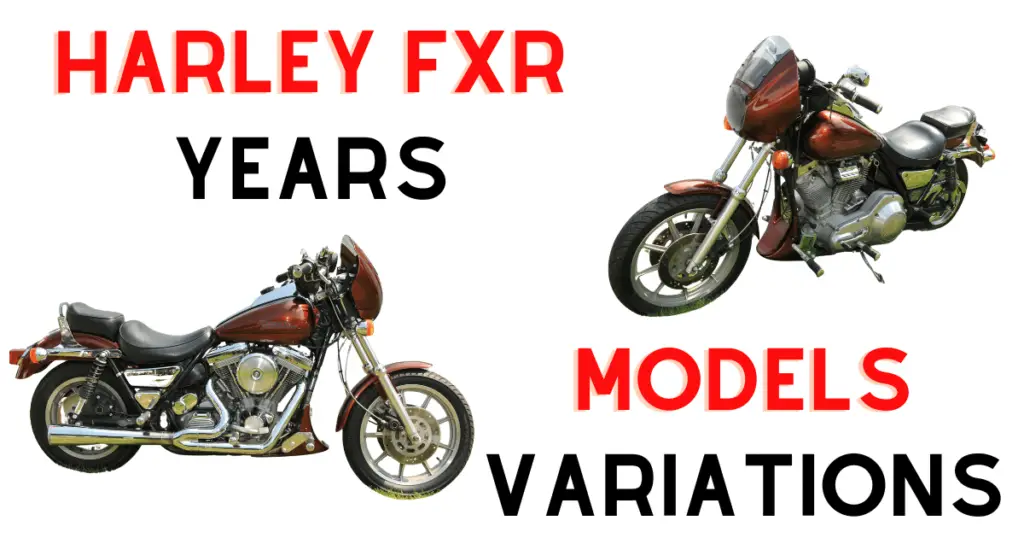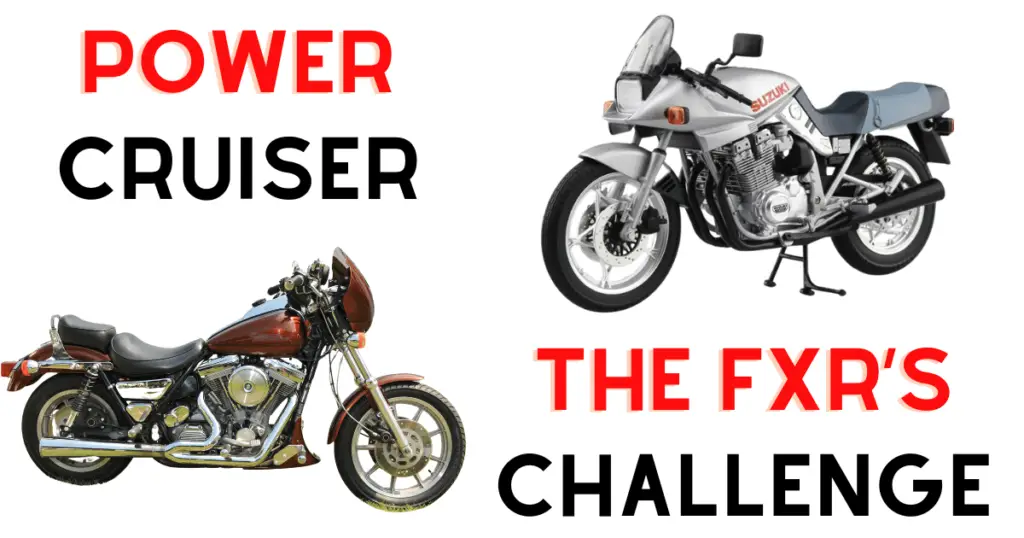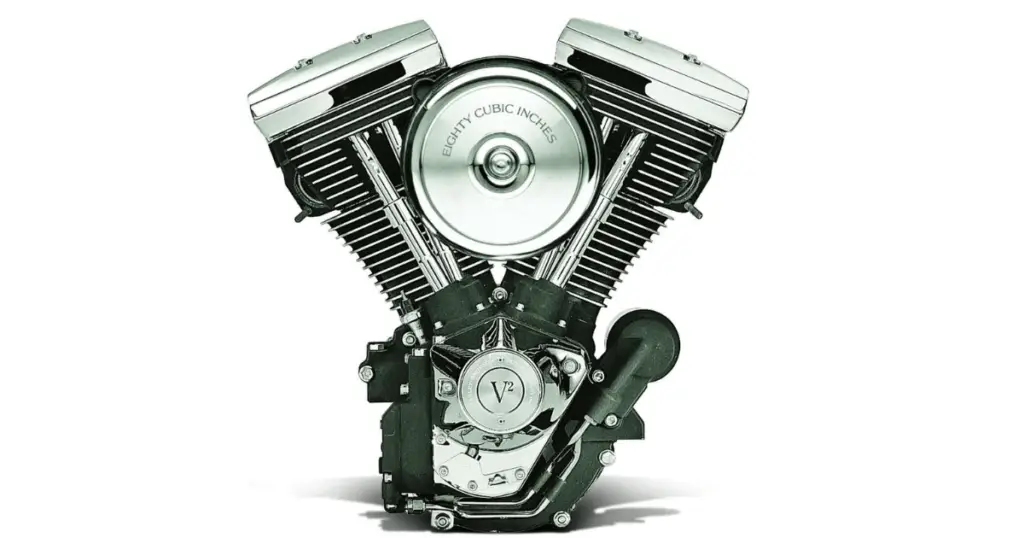The Harley FXR years represent a pivotal chapter in the storied history of the iconic American motorcycle manufacturer. Introduced in 1982, the FXR series heralded a new era of performance, handling, and rider ergonomics, earning it a dedicated following that persists to this day. You might recognize the FXR by its distinctive frame, which was designed with input from engineers rather than stylists, prioritizing function and the riding experience.
Your interest in the FXR series likely relates to its reputation as one of Harley-Davidson’s most “rideable” motorcycles. The bike’s agile nature and balanced design stemmed from a frame that was lighter and stiffer than its predecessors. This engineering focus resulted in a motorcycle that offered superior handling, especially in terms of cornering and overall maneuverability, setting the stage for what many enthusiasts hail as the best bike Harley-Davidson ever produced.
During its production run, which began in 1982, there were variations of the FXR, including the FXR2 and FXR3 models, each offering unique features and limited-edition elements. Production of the original FXR models ceased in the mid-1990s, and although the FXR2 and FXR3 models made a brief appearance later on, these too were limited in production numbers. This limited availability over the years has contributed to the FXR’s cult following and the high regard in which they’re held by Harley-Davidson enthusiasts around the world.
Related reads:
– Dyna vs FXR: Historic Harley Model Showdown and Comparison
– Harley Model Showdown: FXR vs FXRS vs FXRT
History and Evolution of the Harley FXR
The Harley FXR series boasts a significant chapter in motorcycle history, characterized by its blend of innovative design and performance. Introduced in the 1980s, it was a response to a growing market need for a sportier, more versatile American motorcycle.
Origins and Significance of the FXR
The Harley-Davidson FXR was unveiled in 1982, initially employing the 80ci Shovelhead engine. Its V-twin engine and five-speed transmission heralded a new era for the brand, appealing to riders looking for a motorcycle with traditional aesthetics but modern performance.
Read more: Harley Engines by Year: The Legacy of American Motorcycling
Transition to the FXR Frame
Harley-Davidson moved from using the Shovelhead to the more advanced Evo engine in 1984. The FXR frame was revolutionary, adopting robotic welding and welded stamped-steel parts for enhanced precision and strength. This change marked the transition into a new era of motorcycle engineering.
Notable Models and Variations

Through its production span, several notable models emerged from the FXR line, including:
- FXR Super Glide II: The foundational model offering a balanced ride
- FXRT Sport Glide: Equipped with additional touring features
- FXRP Police Model: A variant tailored for law enforcement use
- CVO (Custom Vehicle Operations) editions: Limited number, collector-grade motorcycles with premium features and finishes
Following its initial cessation in 1994, the FXR2, FXR3, and FXR4 were produced as part of the CVO line in the late ’90s, signifying a brief resurgence with enhanced features.
Legacy of the FXR Series
Regarded by collectors for its balance of performance and style, the FXR series left a lasting legacy in the Harley-Davidson lineup. These motorcycles maintain a loyal fan base and are highly sought after in the used market.
Erik Buell’s Influence
Erik Buell, an engineer and motorcycle racer, played a pivotal role in the FXR’s design, ensuring the bike’s handling and performance were of the highest standard. His influence is a testament to the FXR series’ enduring reputation for quality and innovation.
Comparisons with Japanese Competitors
The FXR’s introduction coincided with the need to compete against sportier Japanese bikes from brands like Honda and Yamaha. Harley-Davidson’s FXR struck a fine balance by offering a more American, classic V-twin experience with performance that could stand up to its foreign counterparts.
Design and Engineering
In this section, you’ll gain insights into the robust design and engineering of the Harley FXR, which has cemented its status through a mix of top-notch chassis design, engine performance, and manufacturing precision.
Chassis and Framework
Your experience with the Harley FXR begins with its chassis, featuring a rubber mount framework that redefined ride quality. This design cleverly isolates you from engine vibrations, leading to a smoother ride. With a focus on handling, the FXR’s chassis integrates quality materials and innovative construction techniques, including robotic welding, which ensures precision and durability.
Engine Development and Performance
Under the hood of an FXR, you’ll find a powertrain that’s evolutionarily sophisticated. Initially, the FXR sported an 80ci Shovelhead engine, but it was later equipped with the more advanced Evo V-twin engine. This transition marked a significant leap in performance, with the Evo known for its reliability and capability to deliver power efficiently.
Aerodynamics and Fairings
As you cut through the air on an FXR, it’s the result of meticulous design choices. The fairing is not an afterthought but a product of wind-tunnel testing, ensuring that you have an aerodynamic profile that enhances stability and speed. The bike’s sharp lines and contours are shaped to provide you with an unobstructed ride against headwinds.
Sophisticated Manufacturing
The FXR series showcases Harley-Davidson’s commitment to sophisticated manufacturing processes. It benefits from computer-aided design (CAD) to optimize componentry for both performance and aesthetics. Every aspect of the FXR, from its chassis to the intricate engines, is a testament to the high quality standards and the pursuit of engineering excellence.
Model-Specific Features
When exploring the variant-specific features of Harley FXR models, consider the aspects that contribute to their distinct riding experiences. These include the frame design aimed at improved handling, special fairings for specific models, and unique styling elements that evolved over time to meet various rider preferences.

FXRS Low Rider and Variations
The FXRS Low Rider aimed to combine a traditional Harley style with enhanced performance. The model sported a distinctive frame that allowed for better stability and handling. Here’s a breakdown:
- FXRS Low Glide: Featured a lowered suspension for a unique stance and better center of gravity.
- FXRC Low Glide Custom: Offered in 1985, it included a custom oil tank, and exclusive graphics and paint options.
- FXRS-Conv: This variation came with a detachable fairing and saddlebags, providing flexibility for riders.
The FXRT Sport Glide
The FXRT Sport Glide was tailored for those with a leaning towards touring:
- Fairing: Equipped with a fixed fairing that offered wind protection for a more comfortable ride.
- Handling: A revised frame design ensured a blend of stability and handling for long-distance travel.
- Tires: Originally equipped with Dunlop tires that catered to its touring nature.
Limited Edition and CVO Models
Harley Davidson’s CVO (Custom Vehicle Operations) division produced low-volume custom bikes that were exclusive and came in limited numbers:
- FXR2 and FXR3: Released in 1999, featured custom paint and style elements, with the FXR3 available in a vibrant green and blue hue.
- FXR4: The last in the series, released in 2000, concluding the FXR range with special features like a chrome console and fuel cap.
Market Impact and Brand Legacy

The Harley-Davidson FXR’s inception in the early 1980s signified a pivotal point for the brand, uniquely positioning it in the motorcycle market and leaving an indelible mark on Harley-Davidson’s legacy through its combination of innovation and performance.
Competing with American and Japanese Manufacturers
In the wake of tough competition from both American and Japanese motorcycle manufacturers, the Harley FXR surfaced as Harley-Davidson’s answer to the market’s demand for a performance-oriented cruiser. With a more aggressive stance, the FXR sought to carve out a niche that was distinct from typical cruisers like Honda and Yamaha, featuring improved handling, a steeper lean angle, and better power dynamics, which allowed you to feel the road differently.
AMF Era and Its Effects
During the AMF ownership years, from 1969 to 1981, there were complaints of dwindling quality in Harley-Davidson motorcycles. When the FXR was launched, it aimed to overturn this perception by enhancing the overall ride experience. It achieved a reduction in vibrations and an increase in frame rigidity, showcasing Harley-Davidson’s commitment to revamping its image and quality of production.
Enthusiast Community and Collectibility
Harley-Davidson FXR models have fostered a robust community of enthusiasts and collectors, buoyed by their limited production run and significant model evolutions. The FXR’s blend of American V-Twin power and performance-oriented design have made it a sought-after collectible. Strong market demand for used FXR models is a testament to their enduring appeal.
Legacy of Innovation and Performance
The FXR series stands as a testimony to Harley-Davidson’s legacy of innovation. Balancing traditional American cruiser aesthetics with enhancements in performance and handling, FXR models differentiated themselves with a frame that contributed not just to the look but to the ride quality, marking the FXR as a performance cruiser ahead of its time.
Technical Specifications and Developments
In this section, you’ll understand the key evolutions made to the Harley-Davidson FXR series. From the engine performance to handling advancements, learn how these bikes have undergone changes for enhanced ride dynamics and greater customization potential.
Engine and Transmission Evolution
The FXR series started with the Shovelhead engine and transitioned to the more powerful and reliable Evo, or Evolution engine, providing a significant boost in power. Initially, four-speed transmissions were the norm, but later models were equipped with a five-speed setup, enhancing the FXR’s riding experience with smoother gear shifts.

Handling and Ride Comfort Innovations
Your FXR’s ride benefits greatly from its rubber-mounted engine which reduces vibrations, along with a swingarm that improves stability and ground clearance. These developments contributed to a comfortable and maneuverable ride, placing emphasis on the FXR’s balanced handling characteristics.
Advancements in FXR Accessories and Customization
- Battery & Oil Tank: Location optimizations led to easier maintenance.
- Dunlop Tires: Provided better grip and longevity.
- Console & Fuel Gauge: Introduced for improved functionality and style.
Enhancements in accessories made the FXR not only more practical but allowed for increased personalization, reflecting the riders’ uniqueness.
Performance Upgrades and Aftermarket Potential
The aftermarket embraced the FXR due to its performance capabilities and powertrain flexibility. Upgrade options like enhanced carburetors, ignitions, exhaust systems, and camshafts led the FXR to be a favorite among those looking to boost their bike’s performance.
Influence on Later Harley-Davidson Models
The FXR set a benchmark that influenced numerous subsequent models. Your FXR’s design elements can be seen in the Dyna Glide, including the FXDB Sturgis and FXDL Low Rider Custom, with its combination of sportster agility and touring comfort. It paved the path for motorcycles that didn’t compromise on power, handling, or style.

Ownership Experience
As a Harley-Davidson FXR owner, you’ll enjoy a unique blend of traditional American style with notable performance. Your experience will encompass aspects of the ride itself, the effort involved in its upkeep, and the distinct culture that surrounds this iconic motorcycle.
Riding Dynamics and Lifestyle Fit
The FXR series is renowned for its handling and maneuverability, offering a riding experience that’s both responsive and engaging. With a design focused on a low center of gravity, the FXRs boast an impressive lean angle which can elevate your riding pleasure, especially on winding roads. The comfortable ride complements various riding styles, whether you enjoy laid-back cruising or spirited jaunts on the asphalt.
- Handling: Nimble and responsive
- Lean Angle: Superior, for an American cruiser
- Ride Comfort: Designed for long hours on the road
- Lifestyle Match: Fits both leisure and performance-oriented riders
Maintenance and Reliability Insights
Harley-Davidson is a marque synonymous with quality and reliability. The FXR, with its robust frame and well-engineered components, generally upholds this reputation. However, as with any motorcycle, regular maintenance is key to preserving its performance and reliability. Certain models, like the FXR police model, were built to higher specifications and could offer insights into heightened durability.
- Quality: Solid build with reliable components
- Maintenance Frequency: Regular checks recommended for optimal performance
- Model Variants: Police models may exhibit enhanced durability
Community and Cultural Significance
Joining the ranks of FXR enthusiasts places you within a community that values not only the American heritage of Harley-Davidson but also the camaraderie that comes with it. The motorcycle’s history, including figures like Bob Leroy of the AMA, adds to its cultural significance. Additionally, owning an FXR connects you to a wider network of riders who appreciate the bike’s style and performance.
- Community Bonds: Strong connections with fellow owners and clubs
- Heritage Appreciation: Embracing the FXR’s storied past in American motorcycling
- Cultural Events: Participation in rallies and events that celebrate the FXR legacy
Read next: What Year Harleys to Avoid: Comprehensive Guide (Experience)
Frequently Asked Questions
In this section, you’ll find concise answers to common questions regarding the Harley-Davidson FXR, a line of motorcycles that holds a unique place in riding history.